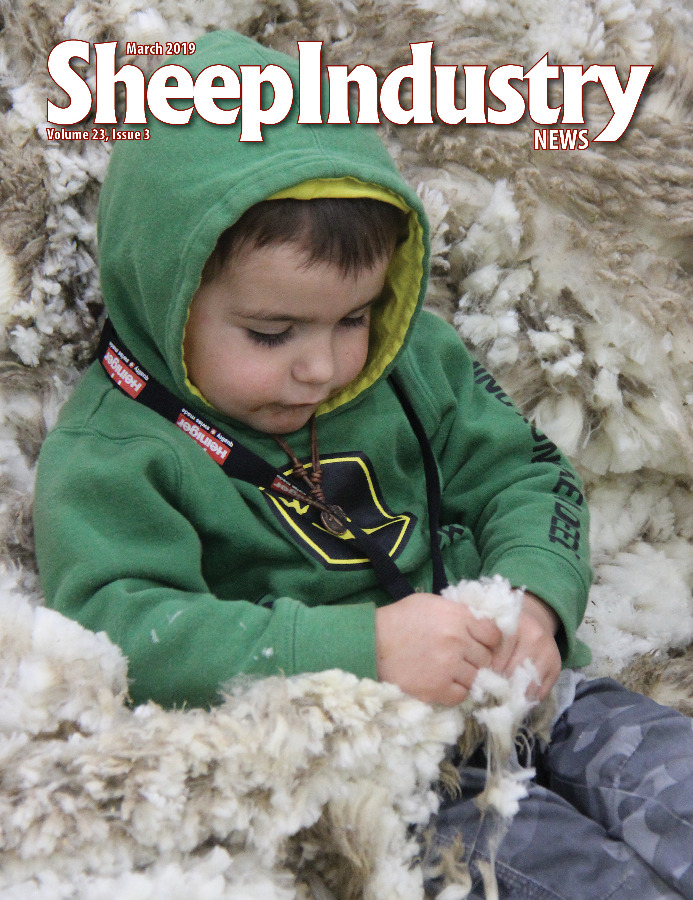
- March 2019
- President’s Notes
- Perrin Edges Shearing Field
- Guest Opinion Shearer Teaches Tips, Tricks
- Convention: Annual Convention Carries Industry Into New Year
- Convention: Award Winners Accept Well-Deserved Honors
- Convention: AWC Wants Consumers to Experience American Wool
- Convention: YE’s Prove Competitive & Determined
- Convention: Lamb Council Examines Technology
- Convention: Monitoring Fake Meat
- Convention: Stakeholders Look to Harness Data
- Convention: Managing Parasites in an Age of Drug Resistance
- Convention: Resource Mgt. Take Aim at 2019 Goals
- Convention: Fungus is Coming
- Convention: Producers, Fishermen Share Common Problems
- Convention: Make It With Wool Fashion Show
- Market Report
- Around the States
- The Last Word
Lamb Council Examines Technology, Genetics, Markets
CAT URBIGKIT
The Shepherd
Sheep producers attending the Lamb Council session at the ASI Annual Convention in New Orleans had a flurry of back-to-back presentations to consider.
Karissa Maneotis of the American Lamb Board talked about the pen-sized, hand-held device called a Rapid Evaporative Ionization Mass Spectrometry (REIMS) that tests biological tissues. The REIMS reliably identifies the type of meat (beef, equine, lamb, etc.) within a matter of seconds. The instrument proved accurate at identifying sex, age and species of meat, but only 62 percent accurate in the subjective measure of flavor.
REIMS proved useful as a platform to capture high-resolution metabolic profiles faster and without lengthy sample preparation and does have potential to be developed to characterize and differentiate flavor and identify off-flavors in meat, Maneotis reported.
Flock54
Sheep producers learned about the exiting new Flock54 program launched by Superior Farms – and you don’t have to be a Superior producer to take advantage of this offering. Flock54 utilizes genotype tests, allowing producers to test their flocks for genetic traits and parentage, with results delivered in a few weeks.
Superior has worked to develop the reasonably priced genetic test with the goal of helping producers increase flock efficiency, increase profit margins and increase the number of lambs in American flocks.
Flock54 is a genotype marker panel test developed in collaboration with the University of Idaho, for a producer cost of $15 to $19 per test. The test is able to identify single-gene traits such as disease resistance for scrapie, OPP and spider, glycogen storage, etc., as well twinning potential, double muscling and horns.
The test also allows for multi-gene characteristics such as milk quality and quantity, and wool staple length and quality, as well as parentage, to help identify productive brood stock.
Sheep producers with thousands of ewes might want to test only their rams, but those with smaller flocks might want to test entire flocks, and some might focus on newborn lambs. Producers can collect a DNA sample – such as an ear notch or tail at docking, or can draw a blood sample – and use the test results to improve their flocks.
Producers can contact Lesa Eidman with Superior Farms for the submission form and shipping information at [email protected].
Market Outlook
David Anderson of Texas A&M University provided the lamb market outlook, noting that in 2019 producers can expect lamb prices to climb closer to the last couple years. There are sources of uncertainty, however – including large cold storage stocks and imports – so it is likely that volatile prices might remain.
Grading
Brad Anderson of Mountain States Lamb & Veal gave an update on video instrument grading, and reminded producers that carcass traits are highly heritable. Although there is much discussion of maternal traits such as twinning and mothering abilities, he reminded producers that carcass quality should be assessed, as well.
Shifting Production
Levin Porter of Texas A&M University discussed aseasonal breeding and the possible economic impact of shifting lamb production. He said that aseasonal breeding is predicted to result in reduced conception rates, with a reduction in the number of lambs sold.
Porter said that moving to aseasonal breeding is likely to result in fewer total lambs, and thus, higher average prices. But those higher prices might spur more production and more imports. He calculated that a 5-percent reduction in the number of lambs would need to be offset by a 6-percent increase in seasonal price, and a 20-percent reduction in the lamb crop would need to be offset by a 30-percent increase in price.
Porter noted that questions remain about the impact of fewer lambs on industry infrastructure (feeders, packers, retailers), and the effect on retail lamb composition.

